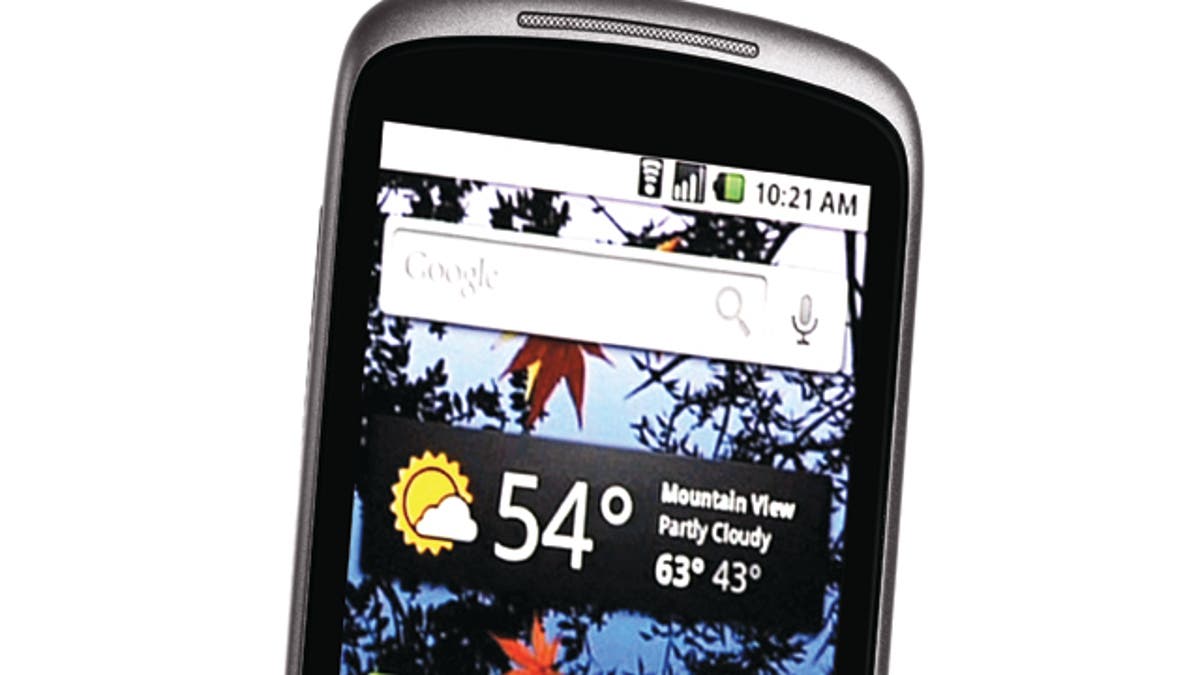
Google's Nexus One is the first phone the search giant is branding and selling itself. But how does it compare with the iPhone? (Google)
Last week's Consumer Electronics Show packed Las Vegas to the brim with new technology products, from 3D HDTVs to e-readers. But the week's most talked-about new gizmo didn't make its debut at the conference.
The day before CES got underway, Google cleverly swiped the spotlight by unveiling the Nexus One, the first phone the company is selling itself. After years of scuttlebutt that a "Googlephone" might be on the way, there's finally a model that deserves that moniker.
Based on Google's own Android mobile operating system and built by Taiwanese phone giant HTC, the Nexus One isn't the tradition-busting breakthrough that some tech watchers expected. (There were those who wondered if the company might give it away and turn a profit via on-screen ads.)
Nor is it the mythical iPhone killer that pundits love to fantasize about. But like most of the Android phones that have debuted since the T-Mobile G1 in November 2008, the Nexus One is a clear evolutionary improvement on its predecessors. It displaces Verizon Wireless's Droid as the top Android model to date, and is one of the most impressive smartphones on the market, period.
SLIDESHOW: Google's iPhone Killer in Pictures
For starters, it's a smidge narrower than the iPhone 3GS, so it feels comfy in the hand -- even though its screen is bigger, far higher in resolution, and, thanks to new AMOLED screen technology, brighter. It's got one of the fastest processors ever put in a phone and double the memory of the Droid and iPhone 3GS, which gives it a zippy feel and permits slick touches such as icons that pop into place via subtle 3D animation as you switch between screens. And its camera, with five megapixels of resolution, an autofocus lens, an LED flash, and HD video capability, is a step up from most phone cameras, including the one on the iPhone 3GS.
The Nexus One is the first phone with Android 2.1, the newest version of Google's phone software. Google enthusiasts will feel right at home -- it boasts fine phone-sized editions of Gmail, Google Calendar, and the Google Voice virtual phone-number service. Like the Droid, it also has a version of Google Maps that offers spoken turn-by-turn driving directions. (The iPhone's Maps app lacks this ability, forcing you to pony up for a third-party program.)
The phone's Gallery photo application is also a highlight, with a a lovely, polished look. It automatically syncs albums in both directions with Google's Picasa Web Albums photo-sharing service: Pictures you snapped with the N1's camera are available online, and any digital-camera photos you've uploaded to Picasa are available on the N1.
Like the iPhone but unlike the Droid, the Nexus One lacks a physical keyboard. You tap in text using on-screen keys that are available whether you're holding the phone in vertically orientation or horizontally. Once you get the knack, it works surprisingly well. (So does the built-in voice recognition, which lets you dictate e-mails, text messages, and other snippets of information.) A tiny trackball is available for navigating around, but I found it pretty superfluous: I was happy using the touchscreen, even though it lacks the two-fingered multitouch gestures that help make the iPhone so engaging.
Multitouch is a relatively minor omission. In other respects, though, the Android interface falls short of the iPhone's sheer efficiency. Tasks that take one tap on the iPhone frequently take two on the N1, and it's not always clear where you'll find the feature you're looking for. Third-party applications tend to lack the intuitive, consistent design that makes the best iPhone ones feel like natural extensions of Apple's work.
Speaking of applications, Apple's App Store now boasts more than a hundred thousand iPhone programs; most are inexpensive or free, and the best ones are remarkably good. The similar Android Marketplace only has around 20,000 programs so far, and there are fewer standouts. But both the quantity and quality of offerings is improving rapidly.
The fact that Google is selling the Nexus One itself via a slick Web site turns out not to be a big whoop one way or the other. If you're allergic to carrier contracts, you can pay $529 and get a commitment-free version. But the phone works only at 3G speed on one U.S. carrier, T-Mobile. (On AT&T, it falls back to a much pokier EDGE connection, and it's not compatible with Verizon Wireless or Sprint at all.) It only makes sense to buy this handset if you're on T-Mobile or willing to switch, which means that there's a good chance you'll opt to sign a two-year contract with that carrier at $79.99 a month, thereby qualifying to buy N1 for the subsidized price of $179.
Not thrilled about the T-Mobile option? Google says a Verizon Wireless version of the phone will be available this Spring. Verizon offers the Droid and Droid Eris, and Sprint has two Android phones, the HTC Hero and Samsung Moment. AT&T doesn't sell any Android handsets yet, but it's about to jump on the bandwagon in a big way -- at CES it announced that it will release five in the first half of 2010 alone. Additional Android models, with many of the Nexus One's appealing features, should pop up on all four carriers throughout the year.
As for Google, it says that the Nexus One is only the first of many Android phones it'll sell directly. The company may smash everybody's assumptions about the wireless market yet. For now, the Nexus One is merely a really nice smartphone -- which is enough to make its arrival good news.
Harry McCracken blogs at Technologizer, his site about personal technology. He's also the former editor in chief of PC World. Follow him on Twitter as @harrymccracken
